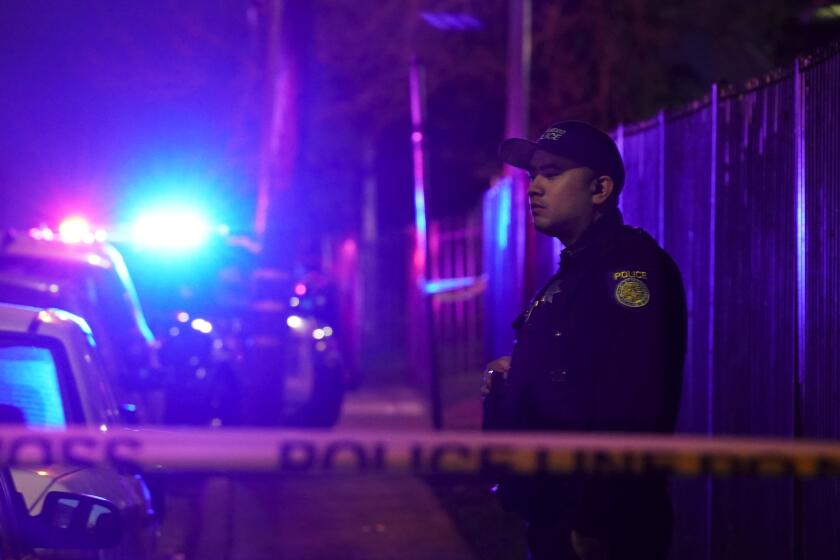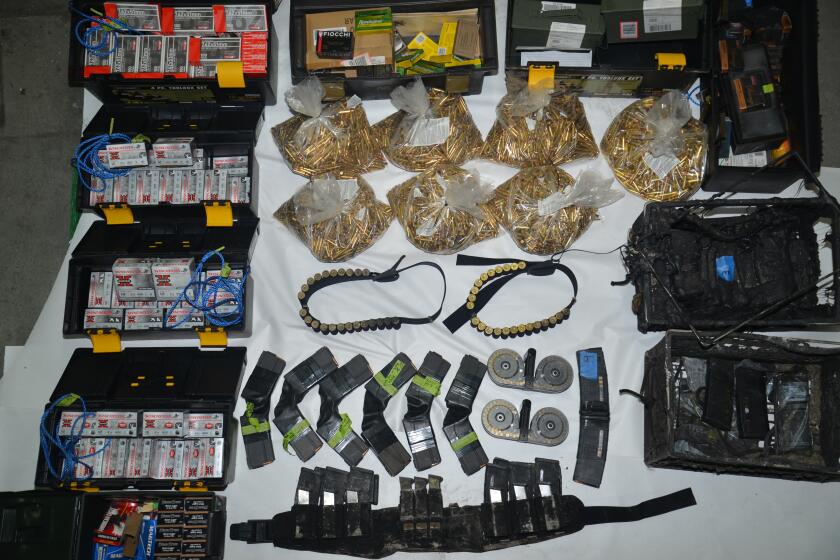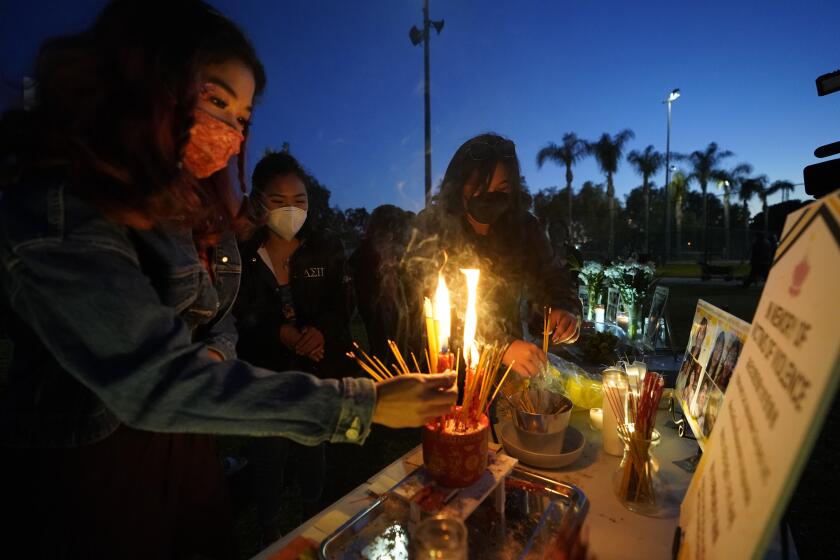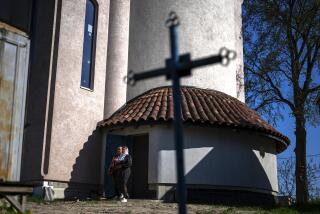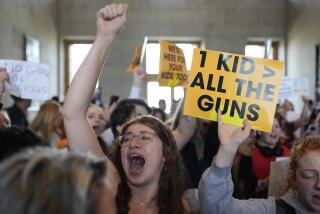Op-Ed: Someone walks into a church with a gun. Should you fear for your life?
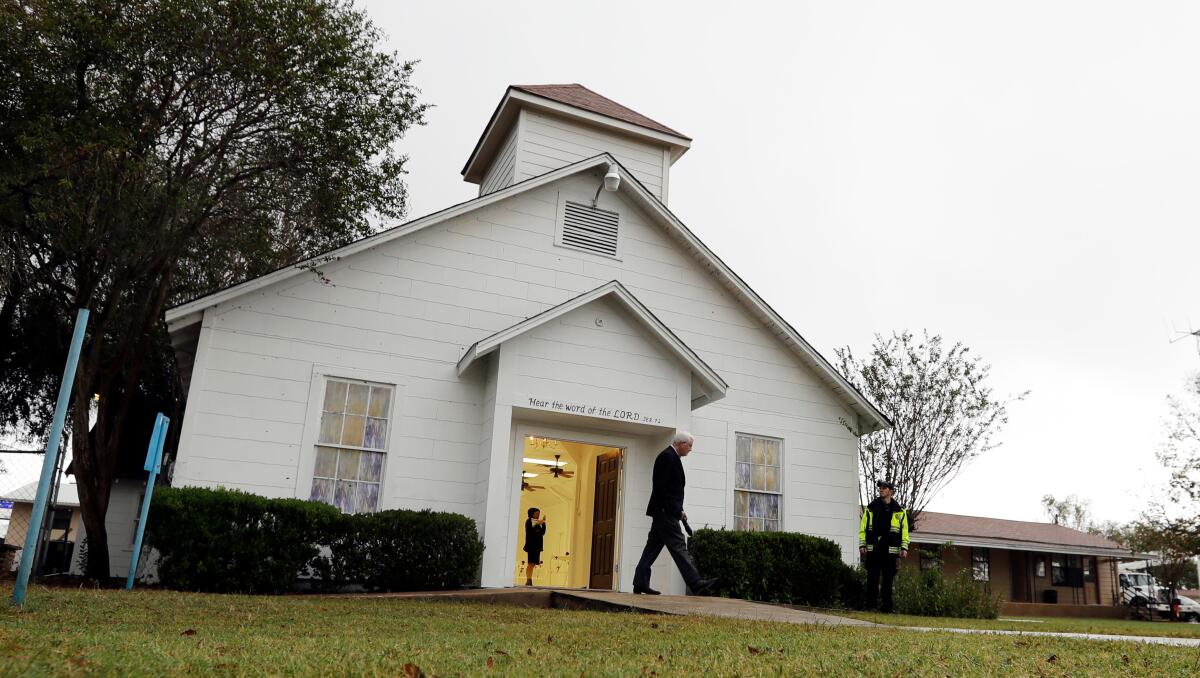
I had never imagined my own murder until one morning in January at the small church my husband and I attend in northern Alabama.
I am sitting in the back pew in the church the Sunday after Epiphany. A man with a military-style haircut opens the front door. The service is almost over. He smiles at me over his face mask as he quietly closes the door. I smile back with my eyes. He whispers, “Can I sit here?” nodding to the empty space beside me. I nod back.
Then I see the gun on his hip and my eyes widen. My heart jump-starts, my knees lock, my body goes cold. He is clothed in olive green, and I can’t tell if he is military or paramilitary, a Proud Boy or a plainclothes cop. Is he going to murder us all?
In Alabama, a bill allowing churches to set up their own police forces was signed into law in 2019. The legislation was inspired by a 4,000-person megachurch in Birmingham that was concerned private security measures were inadequate in an era of mass shootings.
A father killed his three daughters and a man overseeing his supervised visit with the girls before turning the gun on himself, authorities said.
Twenty years ago, my husband Hugo and I built a getaway cabin on Lookout Mountain at the tail end of the Appalachians. It’s a peaceful place to relax with family. There’s a resilient, rebellious spirit alive and well here, along with a thriving community of artists.
Next to me, the man’s automatic pistol, two cartridges heavy on his other hip, is only inches away. Do I shake off my good Southern manners and go up to the crow’s nest where my husband is streaming the service on Zoom to alert him to the danger? A thin layer of sweat gathers under my arms in the chilly church. Fear floats beneath the surface of my awareness, an anxiety fed by the frequent news about mass murders in sacred places like schools and churches and synagogues.
As the man with the gun sings along with the congregation, I can only envision our massacred bodies and imagine myself tackling him no matter what he does. I convince myself I will fight back, but my body betrays me as I remain frozen, unable to act.
Alabama is an open-carry state and has no laws prohibiting firearms in places of worship. During a service in 2015, a pastor in East Selma, Ala., tried to wrestle a gun from a man after he shot his girlfriend and her son at church. After the pastor was shot, congregants grabbed the gun from the shooter.
San Jose will soon require gun owners to purchase liability insurance and to pay annual fees to fund violence-reduction initiatives.
Before 1963, no mass murders — defined as four or more peopled killed — had been carried out on a faith-based property in the U.S., , according to Carl Chinn, a church security expert and author of “Evil Invades the Sanctuary.”
At the First Baptist Church in Sutherland Springs, Texas, a gunman stormed a service in 2017, killing 26 people and injuring 20 more. It remains the deadliest shooting at a house of worship in the U.S. in modern times.
The man with the gun takes Communion, and still I do nothing but watch as Hugo follows him and kneels beside him at the altar. I take refuge in the belief Hugo will do something if he feels we are threatened. When Father Bill leans toward the man with the gun, he says, “I hope you’re a sheriff,” as he offers him the thin, tasteless wafer and recites, “Bread of Heaven.”
At the end of the service, Father Bill is standing a few feet away from the man with the gun. “May the peace of the Lord that passeth all understanding go forth with you,” he says. His eyes flicker across the gun. As we file out, I realize the man is a sheriff when a parishioner greets him as such and shakes his hand, thanking him for his service.
There’s no one easy fix for the gun violence epidemic. But the fight against cancer shows a methodical way forward.
Later, I ask Father Bill what he thought when he first eyed this gun-toting man. “I started rushing through the service, wondering if I needed to stop and tell everyone to scatter,” he says. Then he imagined his own death. “My friend just died of COVID, and I realized it might not be COVID that kills me.” It might be the unknown man with a Glock instead. He’s so upset he’s considering hiring private security for future services.
Twenty-five years ago, if a man with a gun on his hip walked into church or anywhere else, I would have widened my eyes, but I would have assumed, without hesitation, that he worked in law enforcement. Not today. When so much of America is armed, how am I supposed to tell the difference between a would-be terrorist or an undercover cop?
And as long as this is the case, I will continue to live in a heightened state of fear, never truly at peace, especially in a church in an open-carry state.
Lanier Scott Isom is an author and journalist in Birmingham, Ala. She co-wrote Lilly Ledbetter’s memoir, “Grace and Grit: How I Won My Fight at Goodyear and Beyond.”
More to Read
A cure for the common opinion
Get thought-provoking perspectives with our weekly newsletter.
You may occasionally receive promotional content from the Los Angeles Times.
